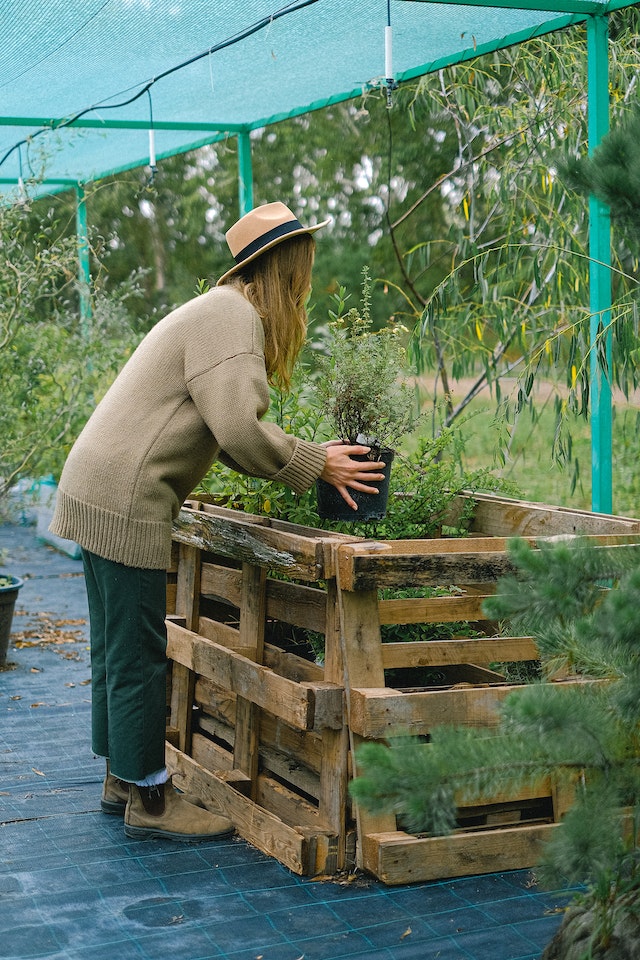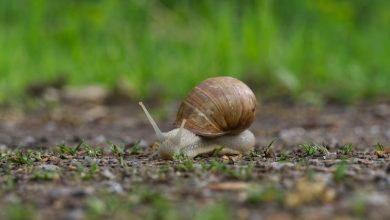
Ideas for Container Gardening
In a movable pot that is easier to maintain than an in-ground garden and more resistant to weeds and animals, container gardening is the best way to grow everything from flowers to fruit, vegetables to vines, and shrubs to succulents. Discover helpful planning and planting advice for container gardens, as well as how to make simple DIY planters.
Container Gardening: A Continuing Trend
The popularity of gardening in the US is at an all-time high, which is not surprising given that gardening has been shown to reduce stress and anxiety while increasing levels of serotonin, sometimes known as the happiness hormone.
While gardening in general is a popular hobby, container gardening has become increasingly popular. Consider the flexibility of moving planters inside for the winter, the simplicity of switching out flowering or food-producing plants as the seasons change, and the potential of containers to create a focal point and little garden destination in your backyard.
Additionally, containers are the best option for people who live in apartments or have limited space because they let you grow vegetables, fruit, herbs, or a profusion of flowers on a tiny patio or veranda.
You can be as inventive as you like when gardening in pots, and potting plants rather than moving them into beds have several benefits. On your porch or kitchen windowsill, you may grow your herbs, fruits, and veggies in containers. Here is a quick overview to provide you with some container gardening ideas because choosing which plant will grow in smaller places and deciding what pots to use can be a bit difficult for novices.
Advantages of Container Gardening

Despite the fact that we have a sizable garden, we still engage in some container gardening because it has numerous benefits. Just a few of the benefits of maintaining a container garden are listed here.
- It is handy. This is so that it can be made and kept handy on your porch or kitchen. Along with lettuce, Swiss chard, a few herbs, and a few tomatoes and peppers, we maintain these items in containers on the porch. Since the main garden is around 250 feet away from the home, this makes it incredibly simple for me to immediately choose anything when I’m cooking.
- Easy to maintain. Weeds do not grow as much in containers, and even if they do, they are very simple to remove, and they are simple to water.
- Extended harvest time. Plants could mature more quickly and the pots warm up much more quickly. In order to extend the plant’s life, you can also transfer the pot inside the house when it becomes cold outside.
- Less disease. The infection won’t spread throughout the entire garden if one plant becomes affected. It is sufficient to remove that one plant.
- Easy to move. Moving containers to a different site is possible (fantastic if you’re moving into a new home, or if you decide you prefer your front porch to your back porch or the other way around).
- Perfect for kids. What a wonderful method to get youngsters interested in gardening without scaring them!
- Great for people with disabilities. People with health restrictions sometimes find it difficult or impossible to cultivate, yet even a disabled person can grow a garden in a container.
- Less back pain. There is far less risk of back pain because containers can be positioned on higher surfaces.
- No need for heavy equipment. You do not require large, heavy equipment because you do not need to till the ground, weed, or perform other typical garden tasks.
- Flexible. Do you want to alter your plants according to the seasons? That is simple to accomplish in a container.
- Containers can add to the beauty of your garden. Some beautiful pots may give your landscape more color and personality. Here are a few of my favorites: the baby Groot flower pot, the elephant-shaped pots, the giraffe planters, and the multicolored Talavera pots.
Disadvantages Of Container Gardens
Growing flowers, herbs, and vegetables in a container has a lot of benefits, but there are some drawbacks as well. And before you begin your container garden, it is wise to be familiar with them. These are only a few:
- More watering is required for containers (sometimes twice a day)
- The price tag can increase. If you enjoy attractive pots, you can run into difficulty because containers are not inexpensive.
- Special soil, which could be pricey, is required for container gardens.
- They also require more frequent fertilization.
- Winters with extreme cold can be fatal to plants planted in containers (Ensure that you safeguard them by storing them in the garage or covering them).
- Some plants might not thrive as well as those cultivated in a garden due to space restrictions. The space available for the roots to grow is lessened.
- A storm could blow small containers away, destroying them.
- On the other side, moving big containers will be difficult.
The Best Sizes for Container Gardening
What you can grow in the pot will depend on its size. A little pot can only hold one or possibly two plants that are rather small and don’t spread much. However, large pots may easily accommodate tiny trees, shrubs, and even bushes.
For the appearance of a live bouquet, you may also combine various smaller flowering plants and grasses in a container.
Your plants’ health and ability to grow well depend on the size of the container you choose for them. It can occasionally help to move a plant to a larger size container if it is currently in a small pot and begins to wilt, turn brown, or otherwise act unhappy.
Where To Keep Your Container Garden
- Regardless of your location, container gardening is a fantastic way to maintain flowering plants. You can creatively arrange the pots and plants on your porch or balcony if your home is located in an urban area.
- Bring some window box planters to your home; they will instantly add color and elegance.
- Decks may turn into a sanctuary of flora and color for people who live in the suburbs.
- If you provide plants in pots with enough water and sunlight, they can grow indoors even if you have no outdoor area at all.
- There are always plants that will thrive wherever you have the space to put them, so do not feel constrained by your surroundings.
- A large concrete planter filled with a variety of vibrantly colored flowers is a great idea for your patio or front entrance. What a beautiful way to welcome friends and relatives.
- Fruits and vegetables can be grown in containers, along with practically any other kind of plant. Vegetable and fruit plants can be grown in pots, but some varieties thrive better there than others, just like with flowers. When grown in 5-gallon containers, smaller tomato types like Tiny Tim and Pixie flourish.
- Hot papers can be grown as well. They look fantastic and are excellent for cooking.
- Greens like Swiss chard, spinach, lettuce, and others can also be grown.
- There are, of course, many more veggies you may grow in containers; some are more successful than others. Peas, radishes, cucumbers, carrots, and beets are a few additional vegetables that we have tried over the years.
- When vine and stalk plants begin to blossom, it is crucial to support them with cages or trellises since the fruits will be more prone to rot and mold if they are left lying against the dirt in the pot. The plants produce healthier and more robust stalks when the weight of the fruit is removed from them.
Tips for Picking the Right Pot
Choose pots that complement your aesthetic while taking the following factors into account:
To prevent plants from drowning from overwatering, make sure your containers have drainage holes.
- When freezing temperatures occur, terra cotta pots could fracture since they are not frostproof.
- Compared to glazed pots, unglazed pots will dry up more quickly.
- In comparison to a ceramic pot, one made of plastic better holds water.
- Because they contain less soil than larger pots, small pots will dry out more quickly.
- Consider using unusual planters for your gardens, such as galvanized metal buckets, used milk cans, washtubs, teapots, roasting pans, or watering cans.
Here are two tips for improving the convenience of container gardening. To make planters portable, put them on casters or rolling plant caddies. Two, utilize drip irrigation to automatically water your containers.
Therefore, choose one or two plants that you like and look for a few adorable pots if you have always desired to have a garden but are unsure of where to begin or feel overwhelmed by the alternatives.
Simply choose pots that are the right size for the flowers or vegetables you desire to grow, and then set the potted plants in a location that receives enough sunlight. You’re going to develop a green thumb and be a pro at container gardening very soon.

FAQs
What vegetables grow well in containers?
Tomatoes, peppers, eggplant, green onions, beans, lettuce, squash, radishes, and parsley are some vegetables that do well in containers. Although plants need a lot more room due to their vining growth style, pole beans and cucumbers thrive well in this kind of garden.
When should I plant my container garden?
When placing heat-loving veggies and flowers in pots, you should wait until nightly lows in your location routinely reach above 50 degrees. This will reduce the risk of plants becoming harmed by cold.
What are the Best Plants for Pots?
In pots, a wide variety of plants can be grown, including:
• Annuals
• Perennials
• Shrubs
• artificial grasses
• Vegetables
• Herbs
What plants thrive in your pots will depend on your climate and whether they receive direct sunlight or shade. Make sure the plants you choose require the same amount of water and light.



